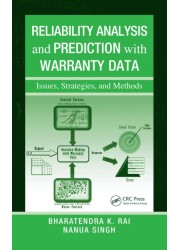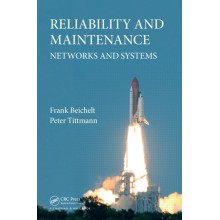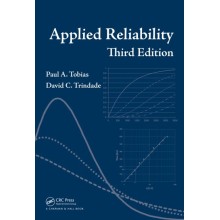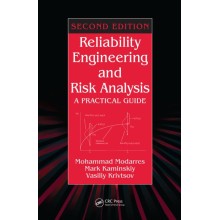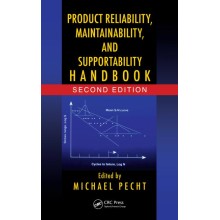Reliability Analysis and Prediction with Warranty Data: Issues, Strategies, and Methods
ISBN: 9781439803257
Author: Bharatendra K. Rai, Nanua Singh
Dispatch Time: 15 - 30 Days
Quantity:
Add to Compare
Through simple, practical approaches, Reliability Analysis and Prediction with Warranty Data: Issues, Strategies, and Methods helps Six Sigma black belts and engineers successfully interpret warranty data to make accurate predictions. It discusses how to use this data to define and analyze field problems, provides guidelines for discovering the root causes for warranty cost reduction, and explores issues associated with warranty data and the approaches to overcome them.
The first part of the book presents an introduction to reliability analysis and prediction using warranty data and highlights the issues involved. The second section offers strategies and methods for obtaining component-level nonparametric hazard rate estimates that provide important clues toward probable root causes and that help reduce warranty costs. Focusing on the prediction of warranty performance, the final part deals with methodologies that assess the impact of changes in warranty limits and forecast warranty performance.
This user-friendly book shows how warranty data can support various levels of decision making to achieve reliable outcomes. Easily understood even for those with minimal statistical background, it includes objectives and summaries in each chapter to enable quick review of the topics.
Table of Contents
NEED FOR ANALYSIS AND PREDICTION WITH WARRANTY DATA AND ISSUES INVOLVED
Reliability Studies with Warranty Data: Need and Issues
Continuous Improvement and Field Data
Three Levels of Decision Making With Warranty Data
The Role of Hazard Function in Reliability and Robustness
Improvements
Warranty Data: Not Always Perfect for Statistical Analysis
Existing Research Work and Certain Limitations
The Scope and Objective of the Book
Warranty Concepts
Organization of the Book
Bibliographic Notes
Characterization of Warranty Data
Life Cycle of a Vehicle
An Overview of the Warranty Claim Process
Automobile Warranty Data: Key Characteristics
Two Inherent Characteristics of Warranty Data: Uncleanliness and Incompleteness
Summary
STRATEGIES AND METHODS FOR RELIABILITY ANALYSIS WITH WARRANTY DATA
Strategies for Reliability Analysis from Warranty Data
From Customer Concerns to Root Causes
Strategies for Hazard Function Estimation
Summary
Hard Failures with Known Mileage Accumulation Rates
Risk Set Adjustment in Hazard Function
Modeling of Mileage Accumulation Rate in the Vehicle Population
A Four-Step Methodology
An Application Example
Summary
Hard Failures with Unknown Mileage Accumulation Rates
Hazard Function with Modification in Numerator
Modeling Mileage on Failed Vehicles Using Truncated Normal Distribution
A Five-Step Methodology
An Application Example
Summary
Bibliographic Notes
Soft Failures with Known Mileage Accumulation Rates
Introduction
Risk Set Adjustment: MIS as Life Variable
Risk Set Adjustment: Mileage as Life Variable
Incorporating Censoring Information in the Hazard Function Estimation
A Six-Step Methodology
An Application Example
Summary
Bibliographic Notes
Soft Failures with Unknown Mileage Accumulation Rates
Hazard Function
Estimation from Doubly Truncated Data Sets
Incorporating Censoring Information in the Hazard Function Estimation
A Seven-Step Methodology
An Application Example
Summary
WARRANTY PREDICTION
Assessing the Impact of New Time/Mileage Warranty Limits
Changes in the Warranty Coverage
The Estimation of Number of Warranty Claims
Cost of Warranty Claims
Summary
Bibliographic Notes
Forecasting of Automobile Warranty Performance
Warranty Growth or Maturing Data Phenomena
Current Warranty Forecasting Methods
Warranty Performance Forecasting Using RBF Neural Networks
Forecasting Warranty Performance Using MLP Neural Networks
Results and Discussions
Summary
Bibliographic Notes
References
Index
Objectives and Overview sections appear at the beginning of each chapter.
Copyright © 2014 Engineering Standards Bureau. All Rights Reserved.
Developed By Zoom Into Web


